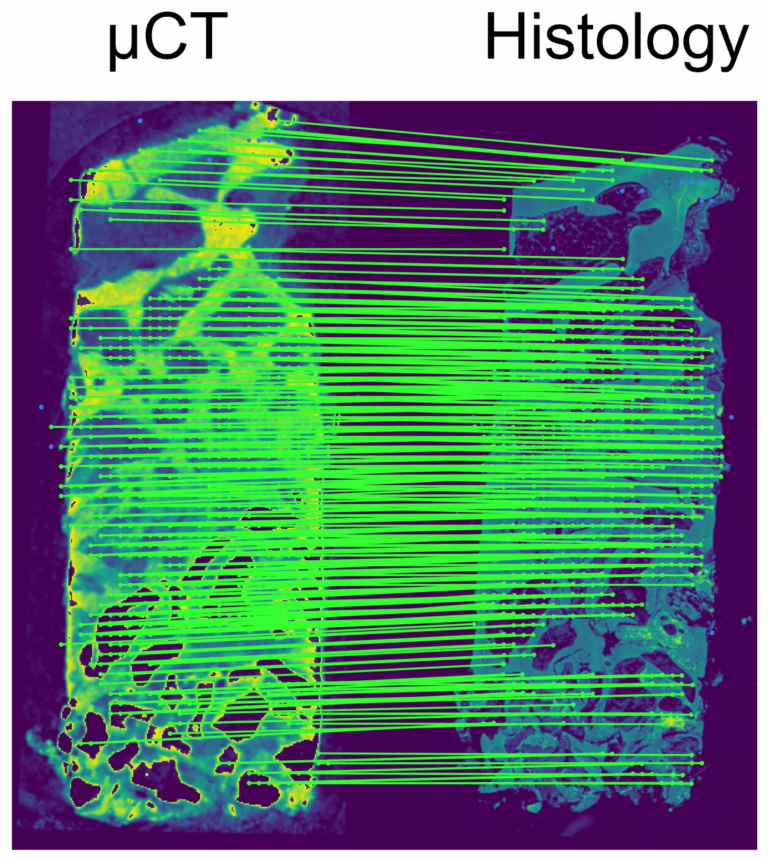- Authors: Báskay János, Pénzes Dorottya, Kontsek Endre, Pesti Adrián, Kiss András, Bruna Katherine Guimarães Carvalho, Szócska Miklós, Szabó BenceTamás, Dobó-Nagy Csaba, Csete Dániel, Mócsai Attila, Németh Orsolya, Pollner Péter, Eitan Mijiritsky, Kivovics Márton
- Publication: 2024, Journal of Clinical Medicine – Dentistry, Oral Surgery and Oral Medicine
- URL: https://www.mdpi.com/2077-0383/13/4/1106
- MTMT Identifier: 34596805
Abstract: Objectives: This study aimed to create a three-dimensional histological reconstruction through the AI-assisted classification of tissues and the alignment of serial sections. The secondary aim was to evaluate if the novel technique for histological reconstruction accurately replicated the trabecular microarchitecture of bone. This was performed by conducting micromorphometric measurements on the reconstruction and comparing the results obtained with those of microCT reconstructions. Methods: A bone biopsy sample was harvested upon re-entry following sinus floor augmentation. Following microCT scanning and histological processing, a modified version of the U-Net architecture was trained to categorize tissues on the sections. Detector-free local feature matching with transformers was used to create the histological reconstruction. The micromorphometric parameters were calculated using Bruker’s CTAn software (version 1.18.8.0, Bruker, Kontich, Belgium) for both histological and microCT datasets. Results: Correlation coefficients calculated between the micromorphometric parameters measured on the microCT and histological reconstruction suggest a strong linear relationship between the two with p-values of 0.777, 0.717, 0.705, 0.666, and 0.687 for BV/TV, BS/TV, Tb.Pf Tb.Th, and Tb.Sp, respectively. Bland–Altman and mountain plots suggest good agreement between BV/TV measurements on the two reconstruction methods. Conclusions: This novel method for three-dimensional histological reconstruction provides researchers with a tool that enables the assessment of accurate trabecular microarchitecture and histological information simultaneously.



